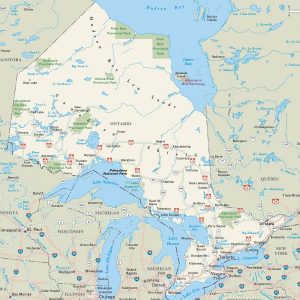Top Real Estate Markets for Investors
Request Your Free Report
 Register for FREE, become a VIP Member and get your FREE real estate market report.
Register for FREE, become a VIP Member and get your FREE real estate market report.
Contact Us
Contact us for your Free Report.Real Estate Markets
Barrie is conveniently located within close proximity to major centres such as Toronto to the south and Ottawa to the east, making it a strategic trading hub in the Golden Horseshoe Area. The city’s GDP is increasing because of a solid industrial base driven by Information and Communications Technology, construction and manufacturing industries, professional, scientific and technical services, and real estate. Barrie has a healthy mix of public and private enterprises with major job providers like Hydro One, Coca Cola, and the local University of Toronto campus. Barrie’s plentiful employment opportunities make it a migration hotspot as more people move in from larger cities across Canada. Barrie’s population, which is now more than 200,000 people, has been growing steadily in recent years. It is an emerging and growing bedroom community for Toronto, which puts upward pressure on rental demand. Lagging indicators in Barrie have shown some important shifts that propelled it to its current phase of the real estate cycle. Prolonged days on market indicate the dampening effect of interest rate hikes. On the other hand, supply side issues show active listings in a reduced amount, but still insufficient to counter the downward pressure on prices. (Source: REIN)
Brantford is home to an increasingly wide range of businesses. The diversification of its industries reflects the health of its local economy as key sectors thrive, such as advanced manufacturing, education, film, television and digital media, food and beverage manufacturing, plastics and rubber production, as well as warehousing and logistics. The city’s population has reached 104,688 people which represents a healthy growth rate of 6.21 percent since 2016. This level of growth is higher than both the provincial and national averages. Shifts in Brantford’s property market are subtle, but still had enough momentum to push the market to its current phase in the real estate cycle. Both rents and ROI are up, while buying demand is dwindling, which is indicative of more people being forced into the rental market. (Source: REIN)
Chatham-Kent has a diverse economic backbone ranging from a thriving agriculture market to transportation and oil and gas sectors, as well as a vibrant call centre industry. Its economic growth is spurred partly by big developments happening in nearby Toronto. On top of these factors, Chatham Kent has an impressive and diverse array of universities and healthcare facilities which attract migration. It’s also home to two universities – St. Clair College and the University of Guelph - which accommodate thousands of students. The region has over 50,000 employees working for a diverse range of companies such as Spectra and Dupont. The number of residents in Chatham-Kent is on the upswing as more people move from other parts of Ontario. Chatham-Kent has a population of more than 106,000 people and is growing by the year. Two leading indicators – housing starts and employment figures - are both down in Chatham-Kent. Meanwhile, sales continue below historical averages showing the impacts of interest rate hikes on housing demand overall. (Source: REIN)
The region east of Toronto includes the communities of Ajax, Clarington, Whitby, Pickering, and Oshawa, which collectively constitutes a thriving economy based on key sectors such as information and communications technology, finance and insurance, as well as professional, scientific, and cultural industries. The area is home to one of the largest tech clusters in Canada and hosts a wide range of high-tech companies that generate thousands of jobs. Together, these cities east of Toronto are home to 641,163 residents. Housing construction activity stalled slightly in the region east of Toronto while employment figures remain relatively unfazed, placing the market in its current phase of the real estate cycle. The impact of the interest rate hikes, and inflationary pressures continue to be felt in the property market as both sales and home price growth slow down. (Source: REIN)
Grimsby & St. Catharines have unique locational advantages that make it particularly strong in manufacturing, agribusiness, and tourism, as well as transportation and logistics. The economic foundations of the city are built on small and medium-sized businesses which generate 80 percent of the area’s economic growth. Dubbed by KPMG (one of the biggest accounting firms in the globe) as the ninth most cost-effective location for businesses in Canada, Grimsby and St. Catharines sport a strong employment sector with a balanced mix between public and private industries. Some major employers include Brock University, General Motors, and Ontario’s Ministry of Transportation. On top of its impressive GDP and job market, Grimsby and St. Catharines’ combined population reaches almost 200,000 people. This growing area houses one-third of the Niagara Region’s highly educated residents and is proving to be a hotspot for people who want a home office by the lake. Housing construction in Grimsby and St. Catharines edged up slightly in recent months, but employment losses are weighing down on GDP growth in general, which brings the area to its current phase in the real estate cycle. A lack of housing supply provides some counterbalance to the downward pressure of the interest rate hikes on prices but is insufficient to keep prices from declining overall. (Source: REIN)
Located in the heart of Ontario’s innovation corridor with easy access to one of North America’s largest transportation corridors, Guelph is an economic powerhouse ripe with investment opportunities. The city’s main economic drivers include advanced manufacturing, information and communications technology, agribusiness, and clean technology. Some of its major employers include NSF International Services and BIOREM. Guelph has a total population of 151,984 people and a GDP growth rate of 3.2 percent in recent years. Even prior to the interest rate hikes, some indicators in Guelph had been shifting, including upticks in its population. But with the impacts of the rate hikes, housing starts, employment, and property sales are all on a downward trend which is indicative of weakening demand. This is negatively pressuring Guelph’s market and brings it to its current phase in the real estate cycle. (Source: REIN)
HIGHLIGHTS Economic drivers in Hamilton • In late November 2021, Hamiton's city council voted to cease the expansion of the urban boundary, which is expected to inflate real estate values, as typical sprawl development land has essentially been siphoned. • Hamilton is projected to have 236,000 new residents and 122,000 new jobs by the year 2051 • Development of McMaster Innovation Park and Red Hill Business Park, as well as expansions to Hamilton's International Airport, will contribute to attracting and retaining a skilled workforce, further continuing to fast-track Hamilton to become a national center for excellence in life sciences • The Conference Board of Canada praised Hamilton as Ontario's fastest-growing economy while also ranking it the "Most Diversified Economy in Canada" in December 2021 • Hamilton has experienced tremendous growth in the tech sector seeing a record-breaking increase of 52% over the course of 5 years • Hamilton is located less than one hour away from five major US/Canadian border crossings • Hamilton has been declared one of Canada's best locations to invest in for 2022 for the third year in a row by an international publication for corporate real estate and economic development • Hamilton is located in the heart of Ontario's highly prosperous agri-business belt and is among the top 3 in North America for food and beverage processing • Hamilton's growth is undeniable with industrial manufacturing in the Hamilton/Niagara region representing an estimated $12 billion annual effect • Hamilton is within commuting distance of Canada's largest city, "Toronto'', via highway 403. It is also a short, 40-minute commute to downtown Toronto via the GO Train, providing accessibility for a workforce of 2 million+ people • Hamilton has been awarded 3.4 billion in funding from the Ontario and Canadian governments to build a new LRT. The LRT will offer frequent and reliable connections on the 14-kilometer line through downtown Hamilton from McMaster University to Eastgate Square • The city's recovery from the pandemic has been quick and exceptional: the unemployment rate has declined back to pre-pandemic levels of 5.4% Hamilton’s economic base is supported by manufacturing, healthcare, financial and professional services, construction, the steel industry, and real estate. As home to world-class universities, colleges, and research-intensive companies, Hamilton is the financial anchor of the Golden Horseshoe Area. Its economy is built on a legacy of an advanced manufacturing sector that embraces cutting edge science and technology. Numerous companies are establishing their headquarters in Hamilton, creating remarkable employment opportunities within the city. Some of the biggest employers include ArcelorMittal Dofasco, Stelco, Nelson Steel, and Siemens Canada. With a population of nearly 800,000 people, Hamilton is the tenth largest city in Canada. The key indicators that shifted in Hamilton include housing starts and employment, which was enough to bring the market to its current phase in the real estate cycle. Active listings moved the opposite direction as less supply becomes available, but this was not enough to neutralize the impact of the interest rate hikes on property prices (Source: REIN)
Kingston has a very stable economy because it boasts, among other industries, several impressive healthcare facilities, a range of post-secondary institutions, as well as tourism. Kingston is renowned as the freshwater sailing capital of the world hosting various sporting competitions including the 1976 Olympic sailing events. The diversity of Kingston’s private and public sector industries catering to health, education, and even the military, reflect in the city’s solid employment numbers. Some of its major employers include Queen’s University, St. Lawrence College, the Royal Military College, and the Canadian Forces Base Kingston. The abundant economic and employment opportunities in Kingston make it one of the richest cities in Canada. With a population of over 175,000 people which is growing at a steady pace, Kingston is becoming an even more attractive place to live. Housing construction activity in Kingston improved slightly in recent months, but lagging indicators such as active listings, prolonged average days on market, and declining home sales firmly position Kingston in its current phase in the real estate cycle. (Source: REIN)
KWC’s economy is driven mainly by strong manufacturing and Information Communications Technology sectors. The region’s manufacturing sector is the fourth largest in Canada employing 50,000 people across 2,000 companies and generating $6 billion in annual revenues. Some of the major employers in KWC are Toyota, Fritto-Lay, and Mitchell Plastics. Because of its solid job market, there’s a high demand for workers, which contributes to its booming population. There’s been a massive population influx since 2018 when more than 12,000 people moved to KWC, which is three times the 20-year average-migration rate in the region. As a result, KWC is now the fourth largest metropolitan area in Ontario behind Ottawa, Toronto, and Hamilton. With a population of over 500,000 residents, it is also the tenth largest city in Canada. Kitchener-Waterloo-Cambridge saw housing construction activity decline which in turn created downward pressure on employment and GDP. On the other hand, home sales are on a modest pace upward but still not enough to keep the market from moving to its current phase in the real estate cycle. (Source: REIN)
Located in the heart of southwestern Ontario between Toronto and Detroit, London is one of Canada’s fastest-growing cities. London is a mid-sized city with a diverse economic background. Its fastest-growing, key sectors are agri-food, manufacturing, digital media and technology, and health and professional services. These key industries also stimulate other parts of the economy through employment, supply chain benefits, and innovation. With a diverse population of over 422,324 people, London is currently the eleventh largest city in Canada, offering its residents and visitors a big-city appeal mixed with small-town charm. Housing starts increased in London shifting it to its current phase in the real estate cycle. Meanwhile, home sales continue to pick up despite the impact of bank policy rate increases over the last couple of months. (Source: REIN)
Milton is well-situated at the center of the Ontario Innovation Corridor, which is one of Canada’s most significant technology clusters. This strategic location supports Milton’s primarily “knowledge-based” economy which makes up 62 percent of its jobs. Milton’s other major industry sectors are business and financial services, healthcare, arts, culture, recreation, and sports. It’s noteworthy that many of these industries have been insulated from, and even expanded, during the pandemic. As a result, Milton has the fifth highest household income in Ontario. Great job prospects and higher incomes are good for real estate investors. Located between Mississauga to the east, Guelph to the northwest, and Hamilton to the south, Milton is strategically located to benefit from ripple effects from these city centres. Milton’s population is currently 143,101 people and growing. It boasts one of the youngest and most educated populations in the province. With a median age of 35.3 years, Milton’s population is nearly five years younger than the provincial median. Employment figures in Milton showed signs of weakening in the past month, leading to its current phase of the real estate cycle. Active listings remain low, but rents continue an upward trajectory. (Source: REIN)
The economy of Montreal is the second largest in Canada (next to the Greater Toronto Area) and the richest in Quebec. Montreal is a centre of commerce, industry, technology, culture, finance, and world affairs. Major industries in the region include aerospace, electronic goods, pharmaceuticals, printed goods, software engineering, textile, tobacco, tourism, and transportation. In addition, it is home to the largest inland port in the world – the Port of Montreal - which handles 26 million tonnes of cargo on an annual basis. The population of Montreal is currently estimated to be 1.86 million people. The indicator that showed the greatest influence shifting the phase of the real estate cycle in Greater Montreal Area is housing construction which is on a downward trajectory in recent months. (Source: REIN)
North Bay is home to important mining, manufacturing, and transportation industries and, in recent years, has become a regional services hub with a high concentration of employment in health care, post-secondary education, the provincial government, and personal services. With a population of 73,600 people and growing, the city government considers its top priority as attracting younger people and families to the area. Employment figures in North Bay showed a decline which maintained it in its current phase of the real estate cycle. Meanwhile, the average days on market showed signs of weakened demand for home purchases, which conversely puts more upward pressure on rental demand, ergo pressured rental prices. (Source: REIN)
Known as the “Sunshine City,” Orillia’s large waterfront attracts many tourists to the area every year, as do several annual festivals and other cultural attractions. While the area’s largest employer is Casino Rama, overall economic activity in Orillia is a mixture of many different industries including manufacturing, government services, customer service, and tourism. The city has a population of 33,411 people, which represents a giant leap of 7.2 percent growth since 2016. Downward shifts in Orillia’s employment figures alongside the impact of interest rate hikes and weakened home sales placed the city in its current phase of the real estate market. Active listings remain low as chronic housing supply shortages continue, but this fact was not enough to counteract the interest rate hikes from weighing down home prices. (Source: REIN)
Ottawa produces about $58 billion worth of goods and services every year. The capital’s robust economy is centered on two major employment sectors: high-tech industry and the federal government. Ottawa is well insulated from market shocks due to industrial diversity and federal government jobs, making it an incredibly resilient economy. With comparatively higher job growth rates, and some of the country’s highest paying jobs, Canada’s fourth largest city, and Ontario’s second, is attracting even more people to its 1.4 million resident base. The situation in Ottawa saw housing starts increase, but employment figures decreased, which shifted the market to its current phase in the real estate cycle. On the other hand, active listings are reduced, pressuring prices despite the weakening overall demand. (Source: REIN)
Peterborough’s economy is highly diversified and ranges from aerospace, advanced manufacturing, clean technology, and small businesses to agriculture. Peterborough enjoys the spillover effects of developments happening in two of Canada’s biggest urban centres close by. In fact, the city was cited by Comfort Life Magazine as one of the best cities to invest in, in 2017. Peterborough has a competitive job market driven by major multi-national companies including top brands such as Siemens, Rolls-Royce, General Electric, and Quaker Oats. Recent socio-culturally driven trends indicate a preference for smaller cities and rural areas over downtown cores. So, exurbs, like Peterborough, are in higher demand than ever before and are attracting millennials and boomers alike. Employment prospects in Peterborough edged down a little but just enough to shift the market deeper into its current phase of the real estate cycle. (Source: REIN)
Sarnia is a city of over 74,000 people, centrally located in Southwestern Ontario on the border to the United States. As such, it acts as Canada’s gateway to the NAFTA (North American Free Trade Agreement) Superhighway as well as being in the centre of the Great Lakes and St. Lawrence waterways system. Sarnia is home to a range of industries and is growing in the areas of bio-based manufacturing and research. With affordable real estate, multi-modal transportation linkages, award winning research institutions, a temperate climate, and a thriving cultural district, Sarnia is proving to be one of the best places for investment growth and opportunities. Sarnia’s employment situation showed some weakening in recent months, which shifted the market to where it is in the real estate cycle. (Source: REIN)
Once seen as strictly a steel town, Sault Ste. Marie continues to diversify its economy and has experienced growth in sectors such as alternative energy, science and technology, aviation services, and business-process outsourcing. Several small and medium-sized businesses have set up or experienced growth in Sault Ste. Marie over the past several years, including Canada Bank Note, JD Aero Maintenance, Heliene Canada, and Createch, among others. With its industrial roots, Sault Ste. Marie has been a manufacturing hub for over 100 years. Harnessing the local natural resources and capitalizing on its location, Sault Ste. Marie is a leading producer of steel, forestry products, renewable energy, and much more. Sault Ste. Marie’s population is projected to grow to 83,300 residents by 2036 from its current 72,051 persons. Lagging indicators in Sault Ste. Marie perfectly explain why it is in its current phase of the real estate cycle. Active listings are on an upward trend, while both sales and home prices face strong downward pressure from the Bank of Canada overnight rate hikes. (Source: REIN)
Simcoe County is located in the central portion of Southern Ontario and forms part of the Greater Golden Horseshoe area, a densely populated and industrialized region within the GTA. The county’s economy is diverse and includes a full range of businesses from agricultural, industrial, to high technology sectors. Honda Manufacturing has been established in Simcoe County since 1986 and is one of Canada’s biggest employers. In addition to the automotive industry, other industries that thrive in the area include plastics, glass manufacturing, and pharmaceuticals. Tourism is also a vital industry in Simcoe County, providing diverse jobs and an economic impact to other employment sectors such as accommodation, restaurants, events, and retail. The County currently has a population of 533,169 people and has been growing at a rapid pace in recent years. Employment figures in Simcoe County weakened recently leading to its current phase in the real estate cycle. Active listings meanwhile declined as supply shortages persist while rental prices are starting to decline within some rental housing types. (Source: REIN)
Greater Sudbury is the largest city in Northern Ontario with a population of 166,004. The city is well-known for its oil extraction and mining industries which drive its economy. While mining has decreased in relative importance over the years, the city’s economy has diversified to establish itself as a major centre of finance, business, tourism, healthcare education, government, and science technology research. Some of its major employers include Vale, Health Sciences North, and Laurentian University. Greater Sudbury has an educated workforce given a significant portion of the populace has reached some level of post-secondary education. Housing starts showed an uptick in Greater Sudbury but unfortunately did not translate to higher employment figures. This led the market to its current phase in the real estate cycle. Meanwhile, rents and the resulting ROI are on an upward trajectory as more and more home buyers become priced out of the property market as of late (Source: REIN)
Located in the centre of Canada and near the United States, Thunder Bay is the regional capital of Northwestern Ontario. The city sits on the shores of Lake Superior – the world’s largest freshwater lake – and is a natural gateway by seaway, road, rail, and air to Western Canada. Thunder Bay is a diverse and modern economy with endless natural resources, entrepreneurial businesses, and world leading research capabilities. Research and innovation are revitalizing the city’s traditional forestry and mining industry with science and technology creating high-growth opportunities in the health and education sectors. Emerging and thriving new sectors also include local food, agriculture, and tourism. With a population of 123,258 residents, Thunder Bay is poised for growth. Housing construction activity in Thunder Bay stalled recently which shifted the market to its current phase in the real estate cycle. Meanwhile, sales have dropped, alongside home prices, demonstrating the impact of consecutive rate hikes. (Source: REIN)
The City of Timmins is centrally located in Northeastern Ontario, and is the regional centre for shopping, culture, commerce, health, industrial supplies, and distribution channels. The City of Timmins has a population of 45,000 but draws consumers and business-to-business trade from throughout the Cochrane District, the James Bay Coastal area, and nearby communities such as Chapleau and Kirkland Lake. These additional communities provide for a regional market of approximately 118,000 people. The affordability of Timmins makes it a prime location for commercial and industrial development. Timmins is thriving with new and existing businesses benefiting from the continuing strength of its economy, which is primarily resource based with mining and forestry activity, but the service and tourism sectors add to its diversity. Employment opportunities in Timmins began to decline as it suffered some slight job losses in recent months. Meanwhile, home sales and home price growth continue to weaken because of interest rate increases. These shifts were enough to push Timmins into its current phase in the real estate cycle. (Source: REIN)
With an economy worth $332 billion, the GTA makes up almost 20 percent of the country’s gross domestic product (GDP) and is home to 40 percent of Canada’s business headquarters. The GTA’s stellar economic performance is made possible by its incredibly diverse industries distributed across the regional municipalities of Durham, Halton, Peel, York, as well as the City of Toronto. The GTA is the second largest center for commerce, trade, tech, and finance in North America. The city’s main industry is finance, which makes up 25 percent of the region’s GDP. The GTA has a high concentration of tech companies and start-ups, making it a vital technological innovation hub. With tech and finance industries leading the way for economic success, the GTA is home to the operational headquarters of all five big banks in Canada. Some of its leading employers are General Motors, Ford, TD Bank, and Deloitte. As the most populated area in Canada and a top destination for investment opportunities, the GTA now caters to 6.4 million residents and is still growing. Housing construction and employment figures have generally showed some signs of weakening in the Greater Toronto Area which accelerated the cycle to its current phase. This is despite the temporary upward blip in GTA sales that saw reduced inventory available in the market.(Source: REIN)
Windsor’s economy is primarily based on manufacturing, tourism, education, and government services. The city is one of Canada’s major automobile manufacturing centres and is home to the headquarters of Fiat Chrysler Automotive (FCA) Canada. Automotive facilities include the FCA’s minivan assembly plant, two Ford Motor Company engine plants, and several automotive parts manufacturers. In addition, Windsor has a well-established tourism industry. Caesars Windsor, one of the largest casinos in Canada, ranks as one of the largest local employers. It has been a major draw for U.S. visitors since opening in 1994 (as Casino Windsor). The city’s population has reached 229,660 people in 2021 making it the third-most populated city in Southwestern Ontario, after London and KWC. Housing starts increased at a modest pace in Windsor, but not enough to accelerate it forward to another housing boom. Current figures for home sales and values – both severely affected by the recent interest rate hikes -indicate a continued weakening of demand. (Source: REIN)








